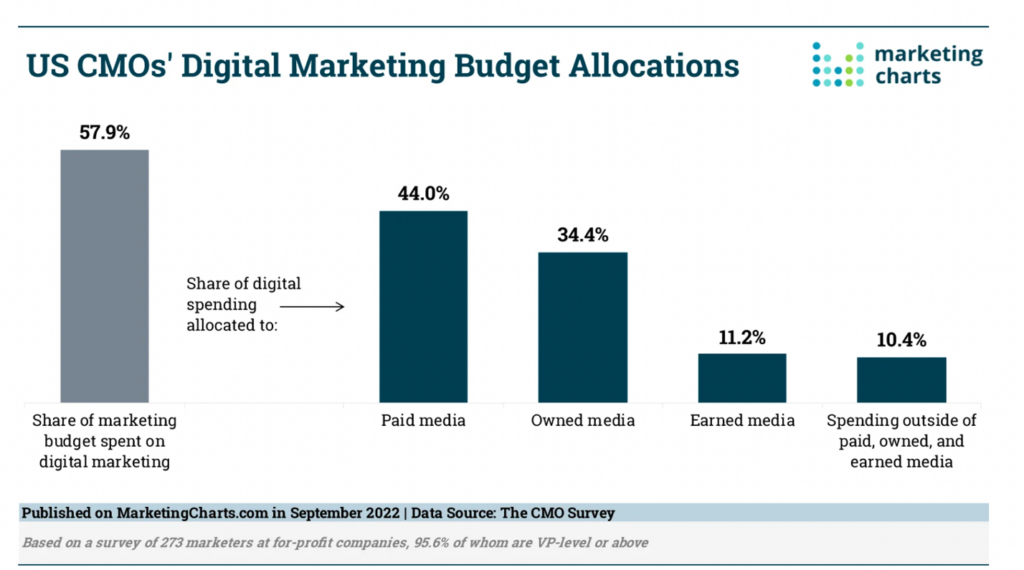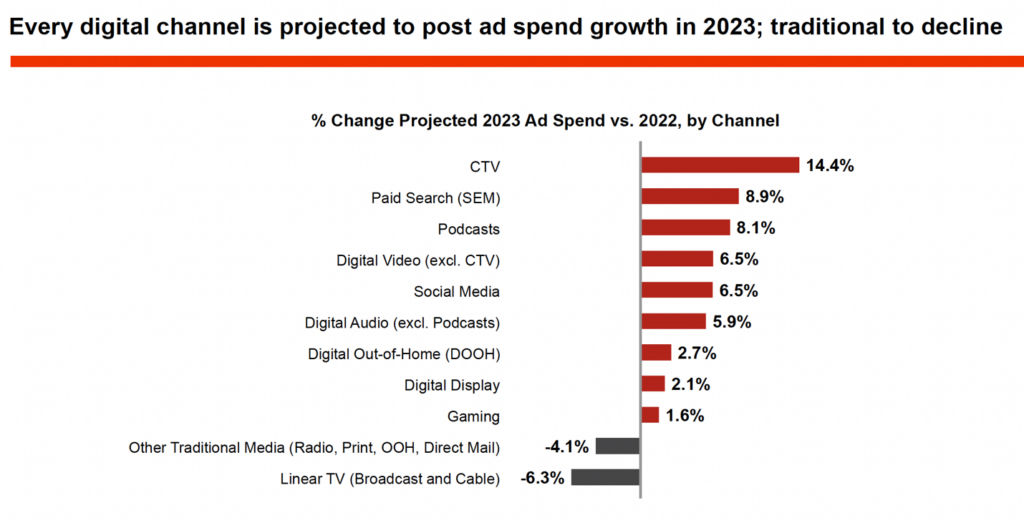With only a fraction of US digital ad budgets devoted to earned media, the ability to quantify and track EMV is causing some marketers to rethink their long-term strategies.
According to a 2022 report by the IAB, advertisers are spending more this year on digital advertising while reducing their spending on traditional media. Despite the budget rise, a recent survey by Kantar reports that only one in 10 marketers state that they have all of the data they need to judge the effectiveness of their marketing strategy. That means marketers will face more pressure to justify each dollar as businesses attempt to drive sales amid economic uncertainty.
Added to that is the complexity of maintaining performance as the nation enters a period of uncertainty, even as the economy appears to be on an uptick.
Brands are increasing their ad spend and devoting the bulk of their marketing budgets to digital advertising. Yet only about 11 percent of their budgets are devoted to earned media.

While earned media lags behind traditional ad spend, its value is demonstrable.
Here’s how it worked for Rihanna:
- From Saturday to Monday of the Super Bowl Weekend, Rihanna’s digital album sales increased by 301 percent.
- “Pour It Up” (2012), a song she performed, saw a 1,387 percent increase in digital song sales and a 470 percent in on-demand audio streams.
- “Where Have You Been” (2011) rose by a 1,272 percent boost in digital song sales and saw a 459 percent leap in on-demand audio streams.
Enter earned media value (EMV) measurement. When marketers can look at data connecting revenue to specific strategies, such as a tweet by an influencer, they can reallocate resources quickly, optimizing revenue opportunities.

A Primer: How Earned Media Value Works
Earned media value (EMV) attaches a monetary value to the mentions or other publicity connected to a brand identity on earned media channels. This might include social media, public relations, influencer marketing and word-of-mouth.
Earned media can help extend the value of more traditional forms of ad spending by helping brands penetrate untapped audiences, essentially for free. Fans can become brand ambassadors and deliver brand messaging with a click.
Earned media is often viewed as more credible than traditional ads, as audiences tend to trust social peers, readers, and influencers more than claims made in traditional campaigns. That human component can transform static ad campaigns into gateways to customer conversion when ads accompany a persuasive influencer’s content.
Yet measuring EMV can be difficult due to the complexity of simultaneously tracking consumer behaviors and brand mentions. Since 2017, a.network has helped over 3,000 companies use their product, Social Index, to reliably measure earned media value (EMV) and campaign ROI.
Social Index 3.0 leverages the use of machine learning-powered algorithms to analyze vast proprietary and public data to help brands understand their customers and the brand’s power in the marketplace.
Users can integrate the Earned Media Values API with their existing analytics or data reporting suite to gain continual access to fresh EMV data.
According to Ayzenberg Chief Media Officer Vincent Juarez, Social Index provides marketers with the most comprehensive benchmarks for tracking earned media values (EMVs). As a result, Ayzenberg’s marketing and data science team is constantly monitoring the social media landscape to identify new and emerging platforms that matter most to marketers.
“Most platforms provide robust analytics in terms of video views, time spent, followers, likes, comments, and shares, among other metrics,” stated Juarez, at the launch of the latest iteration of Social Index. “Filling the void and providing marketers with earned media or advertising value equivalents (AVEs) for platforms like TikTok provides a foundation for testing, learning and optimizing future content efforts. It will also help standardize benchmarks to compare against other platforms.”


